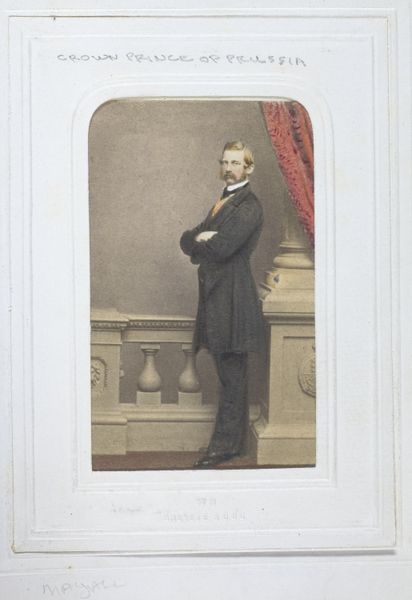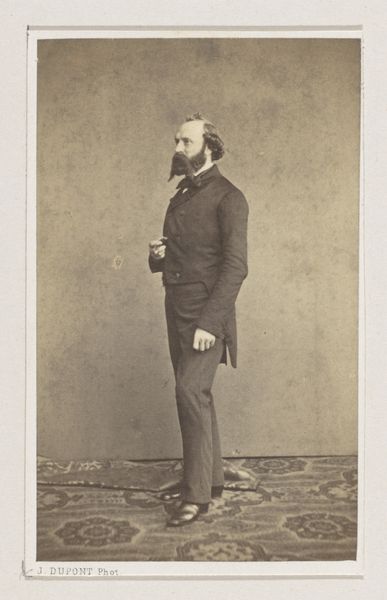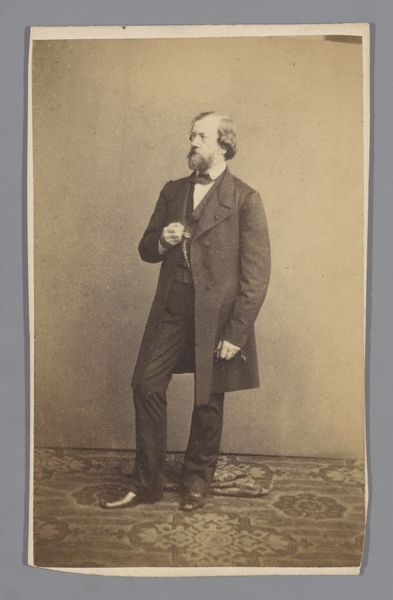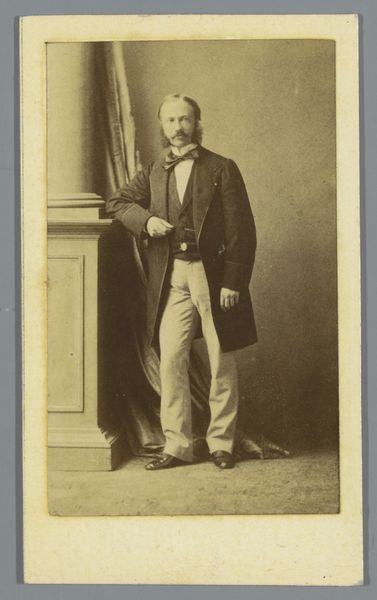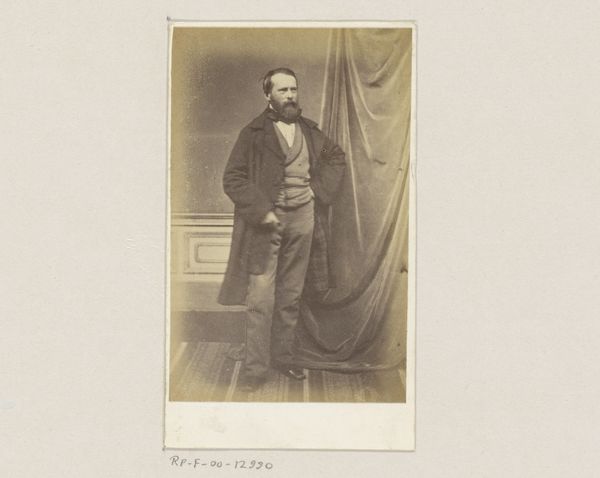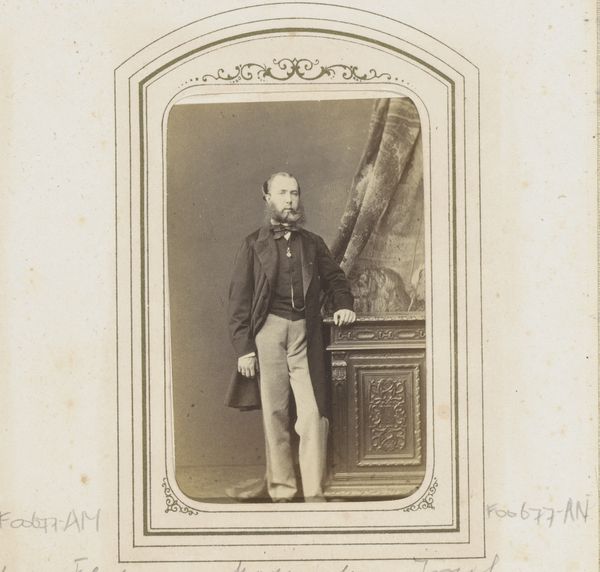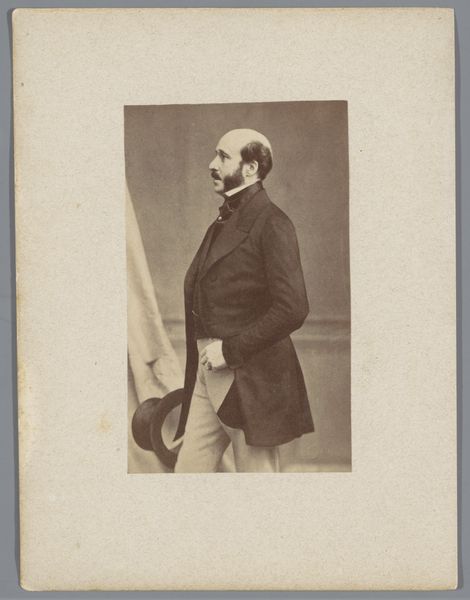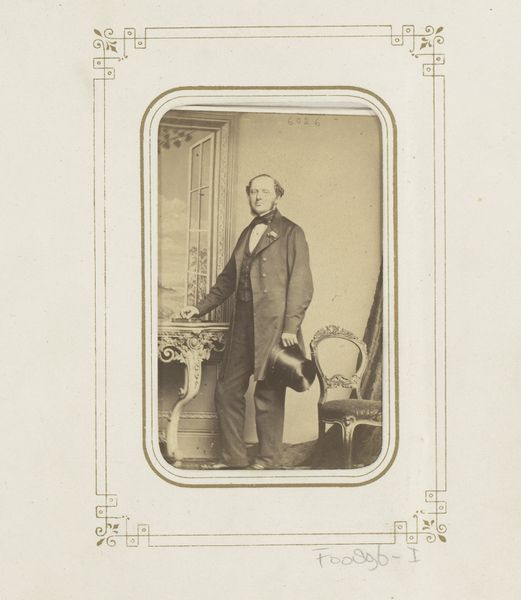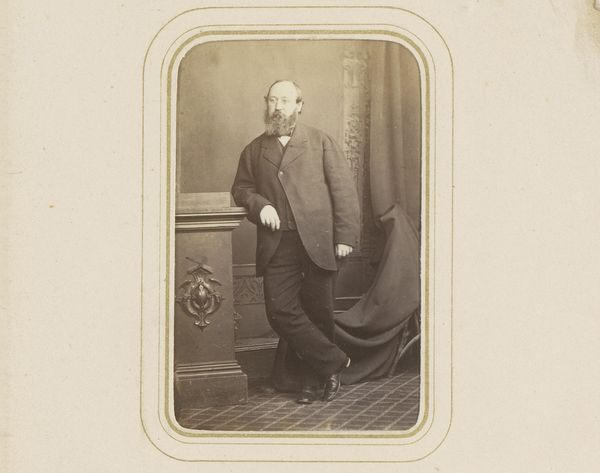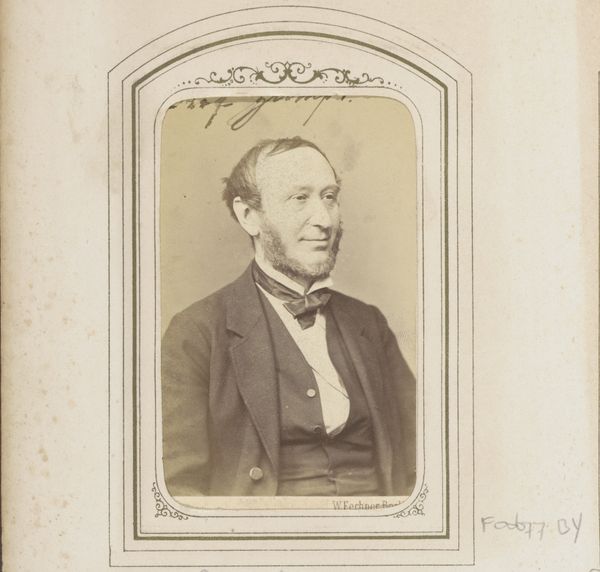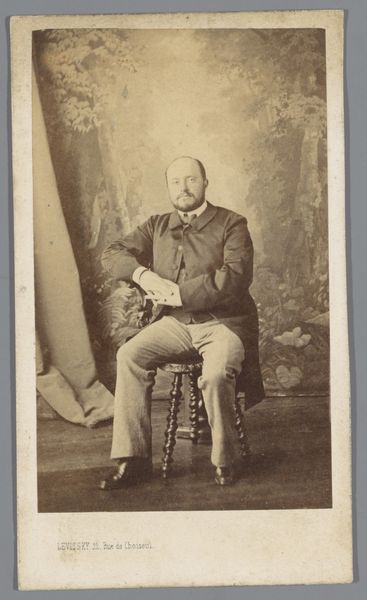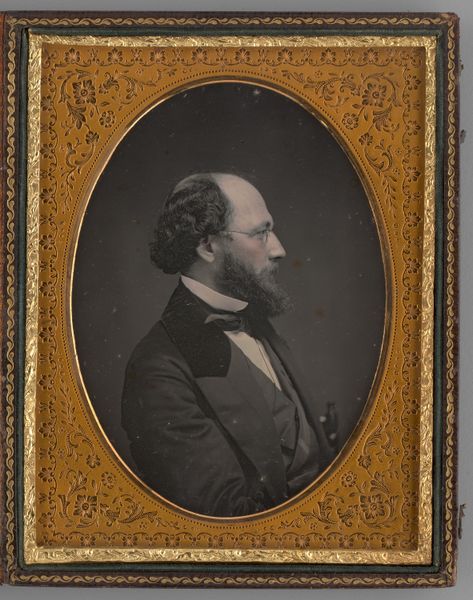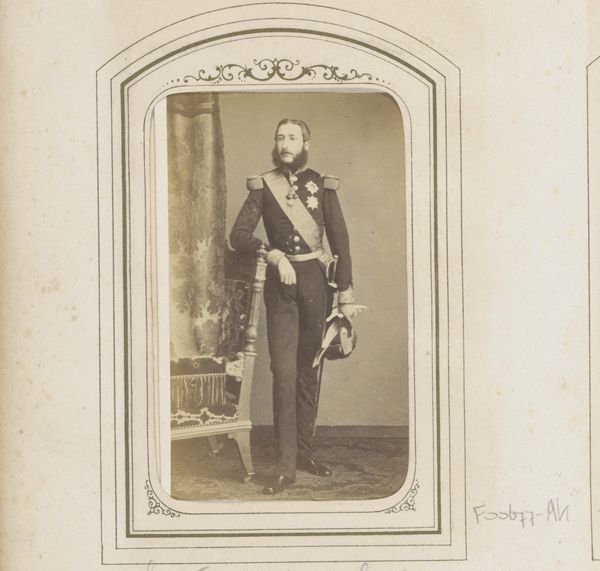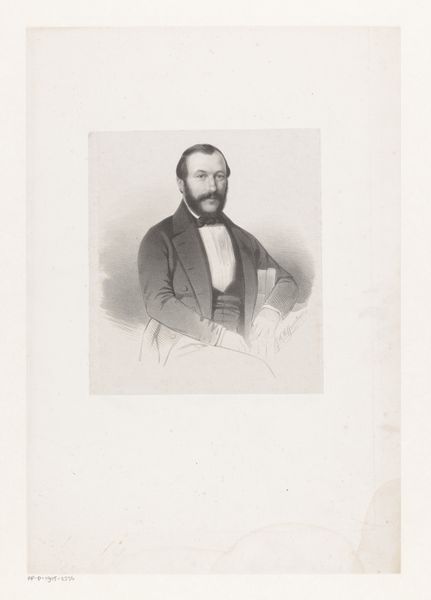
print, photography, albumen-print
#
portrait
#
16_19th-century
#
antique
# print
#
photography
#
framed image
#
men
#
albumen-print
Dimensions: 8.3 × 5.7 cm (image/paper); 10.6 × 6.1 cm (mount)
Copyright: Public Domain
Curator: This is "Prince Consort," an albumen print created in 1861 by John Jabez Edwin Mayall. It's currently held here at The Art Institute of Chicago. My initial reaction? Regal and refined. The light feels delicately diffused, lending him an almost ethereal presence. Editor: The presentation of Prince Albert within a very particular cultural and historical framework of Victorian England strikes me most. He is deliberately posed with markers of status, from his clothing to his proximity to what appears to be classical architecture. What statements does this piece attempt to make, about the man and his role? Curator: Well, consider the albumen print process itself. This photographic printing method, popular in the 19th century, relied on egg whites to bind the photographic chemicals to the paper. This process resulted in sharp and finely detailed images but was resource and labour intensive, often requiring many hands, indicating value. That labor is inherently linked to the creation of images meant to represent someone as powerful as Albert. Editor: Precisely. The materiality connects to the image's propagandistic function. He stands for much more than himself, particularly within a class and imperial system reliant on constructed image. Note how the slightly blurred background is likely intended to focus attention, creating not just a portrait but an carefully managed projection of power. Who was its intended audience? What socio-political ideologies did its circulation perpetuate? Curator: I'd say the albumen process itself contributed significantly to the overall perception of value and refinement of the monarchy at the time. Producing the prints in quantity made the image more accessible, a carefully calibrated balance between availability and luxurious technique that still communicates powerfully today. Editor: And isn't that access strategically limited? While more people could access an image, mass dissemination was regulated. Looking at this now through a contemporary lens, the image asks important questions about historical image control, manufactured public personas, and photography's early function within structures of authority. Curator: I find that contrast fascinating still – the tension between technical sophistication and accessible, if controlled, distribution. To me, that is a very compelling quality. Editor: Agreed. Thinking critically about this work certainly gives us considerable insights into both photographic practices of the Victorian age, but also into our contemporary construction, and consumption, of public figures.
Comments
No comments
Be the first to comment and join the conversation on the ultimate creative platform.
